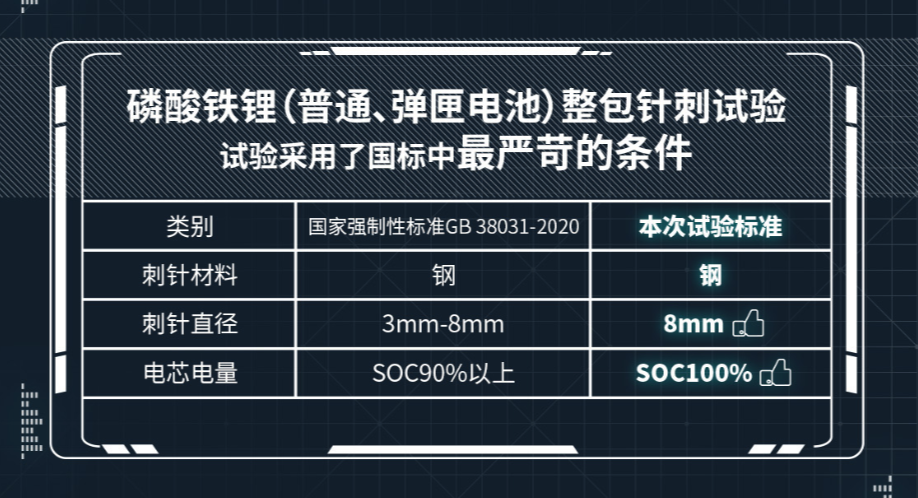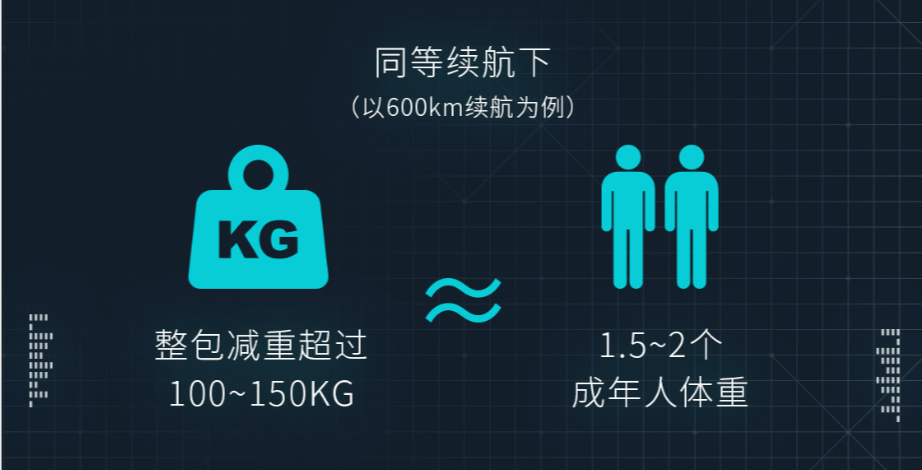On May 20th, GAC Aion once again conducted a “bullet magazine battery” puncture test, but this time the battery cell material was no longer ternary lithium battery, but changed to lithium iron phosphate battery.
The basis of this test is to use national standard test standards, with the battery capacity at 100%, using an 8mm thickest steel needle to directly puncture the bullet magazine battery pack containing the lithium iron phosphate cells, compared with the ordinary lithium iron phosphate cell pack.

The test result of ordinary lithium iron phosphate batteries is that after the steel needle punctures the cell to trigger thermal runaway, there is a phenomenon of voltage drop and temperature rise, and the highest temperature is 329.4℃, and there is smoke. The process lasted for 16 minutes in total.
After the bullet magazine battery was punctured, the highest temperature was 51.1℃. After staying still for 48 hours, the single cell voltage dropped to 0V and the temperature dropped to room temperature. There was no smoke, fire, or explosion during the entire process. The battery pack state was stable, and the internal structure was intact when the battery system casing was opened.
According to GAC Aion, under the condition of the same NEDC endurance of 600 kilometers, the weight of the battery pack containing ternary lithium can be reduced by more than 100-150 kilograms compared to other lithium iron phosphate batteries, which is equivalent to the weight of 1.5-2 adults. The lightweight of the entire vehicle will inevitably bring better vehicle handling and acceleration experience. Moreover, the endurance of ternary lithium batteries in low-temperature environments is about 10% higher than that of lithium iron phosphate batteries, which will bring better performance for vehicles in low-temperature environments.

Lithium iron phosphate batteries have a life cycle of over 4,000 cycles, which is twice that of ordinary ternary lithium batteries, and are more cost-effective, suitable for users with high-frequency charging needs. Both battery types have their own audience, which is also the reason why GAC Aion has launched bullet magazine batteries with both materials.
So what are the improvements of the bullet magazine battery? This is related to safety.
The main reason for the current battery self-ignition incidents is short-circuit caused by electrolyte leakage from the battery cell, which ultimately causes thermal runaway of the battery pack. The bullet magazine battery cell is improved by applying nano-level encapsulation and doping technology to the positive electrode material to enhance thermal stability. At the same time, a self-repairing SEI film is applied to the electrolyte additive to improve the life of the cell and the risk of cell short-circuit.By adding special electrolyte additives, high-impedance polymer films are spontaneously polymerized on the surface of the active material at temperatures above 120 degrees Celsius to reduce the heat generation of thermal runaway reactions. These technological routes have increased the heat resistance of bullet magazine battery cell cores by 30%.
In terms of thermal insulation, bullet magazine batteries have also done enough work. By using mesh nano-porous insulation materials and high-temperature-resistant upper shells, the possibility of thermal runaway of adjacent battery cells is reduced. According to official data, the upper shell of the battery pack can withstand temperatures above 1,400 degrees Celsius.
For batteries, heat dissipation is also important. By optimizing the design of the internal heat conduction path, the bullet magazine battery can increase the heat dissipation area by 40%, which helps to improve the heat dissipation efficiency by 30%.
In addition, in terms of battery management system, the bullet magazine battery uses the latest generation of battery management system chips, which can collect battery data 10 times per second, an increase of 100 times compared to before.
With the above technologies combined, the bullet magazine battery ultimately achieved a 9.4% increase in volumetric energy density, a 5.7% increase in gravimetric energy density, and a 10% cost reduction.
Finally, the first model equipped with a bullet magazine battery is AION Y under GAC Aion, which has opened pre-sales.
_🔗Source: Official press conference.
This article is a translation by ChatGPT of a Chinese report from 42HOW. If you have any questions about it, please email bd@42how.com.
